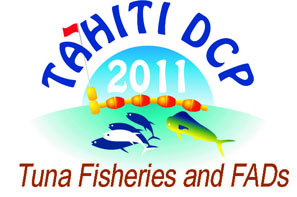Impacts of FAD fishing on the ecosystem
1 :
2 : University of Hawaii
(UH)
university of hawaii
Coconut island -
États-Unis
3 : ISSF
USA -
États-Unis
4 : AZTI
* : Corresponding author
Herrera Kaia - Portualdea z/g E-20110 Pasaia (Gipuzkoa) -
Espagne
The use of drifting FADs by the purse seine fishery raises the possibility of three potential impacts on tuna stocks, biodiversity and the pelagic habitat. The large amount of catches of tunas around floating objects can cause two types of impacts on the tuna populations that we propose to review: a loss of potential yield (by catching fish too small) and a reduction of spawning biomass or stock size (by catching too many fish). Fishing around FADs also generate more bycatch than fishing on free-swimming schools. We review the amount and composition of bycatch in each ocean, and briefly present scientific efforts made by some projects in the world to find solutions to mitigate this impact. If logs and other vegetal debris have always been natural objects drifting at the surface of the oceans, FADs are now new components of this surface habitat. This change could potentially modify the migrations and biology of tunas and other associated species, the so-called ecological trap hypothesis. We review studies in this field by distinguishing between behavioural (e.g. movements) and biological (e.g. feeding behaviour, fitness indices) aspects. Finally, we conclude by recommending the monitoring and management of FADs in each ocean and dedicated research to better assess some impacts and find solutions to mitigate them. We feel this evaluation is a critical tool for informing future decisions that must be made by fisheries managers to achieve the objectives of ecological-based fishery management.

 PDF version
PDF version
